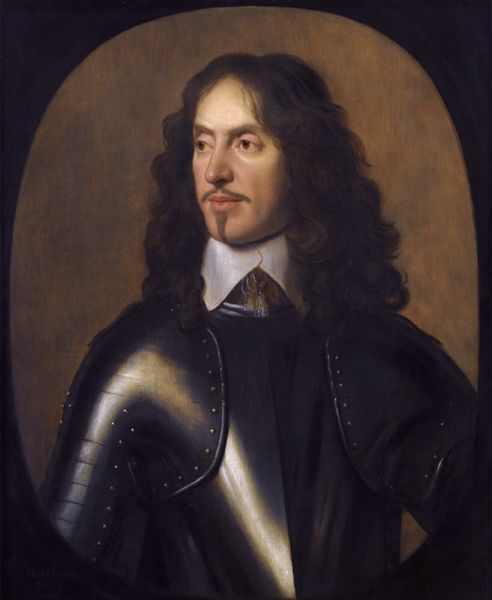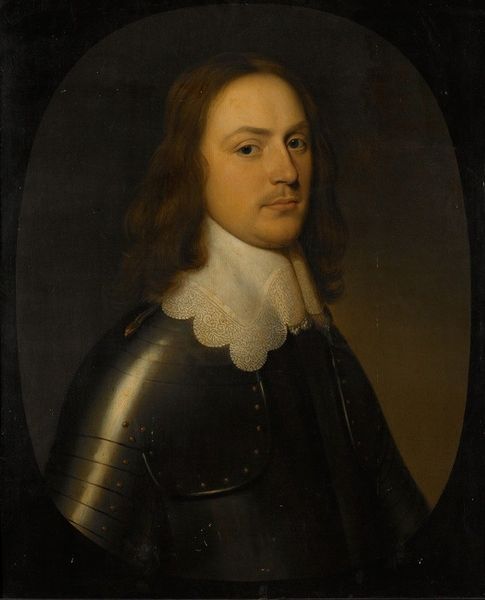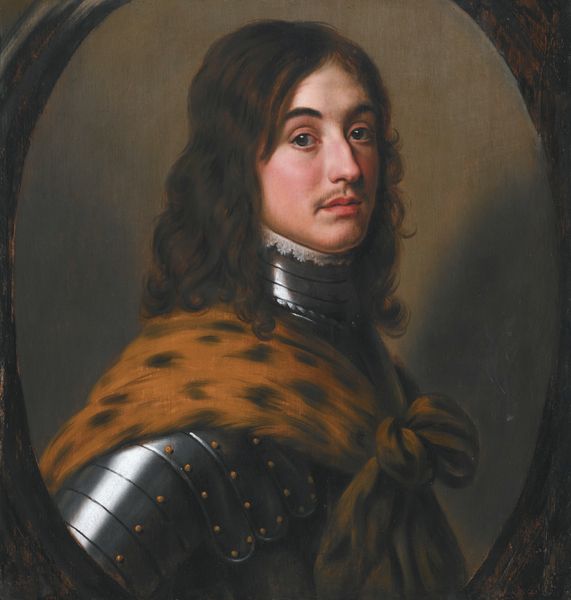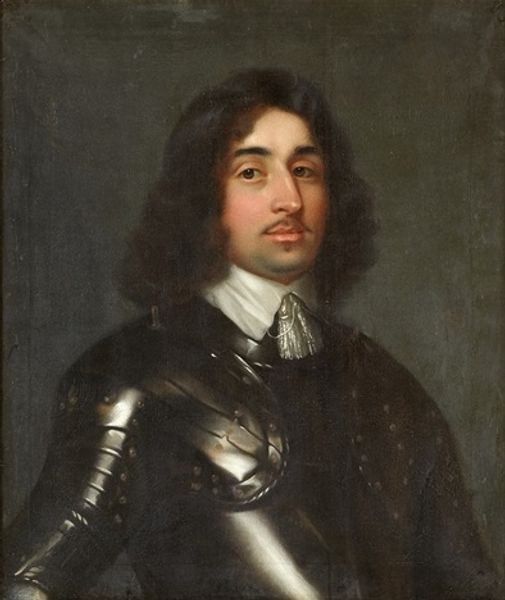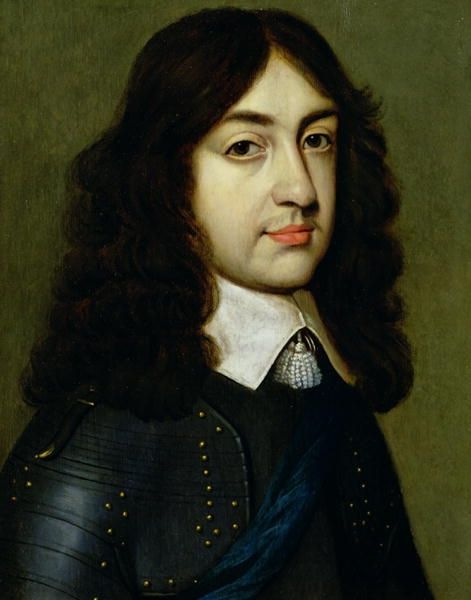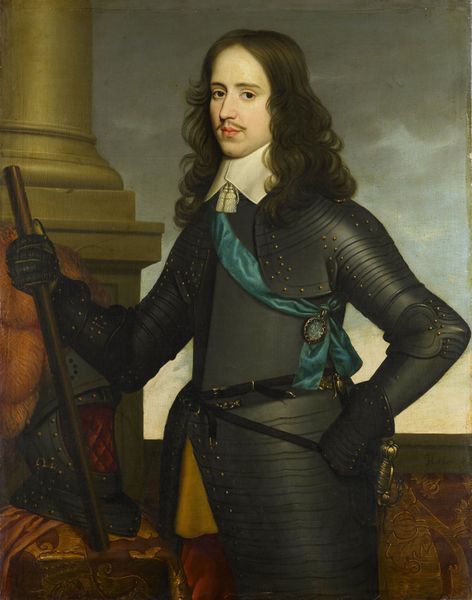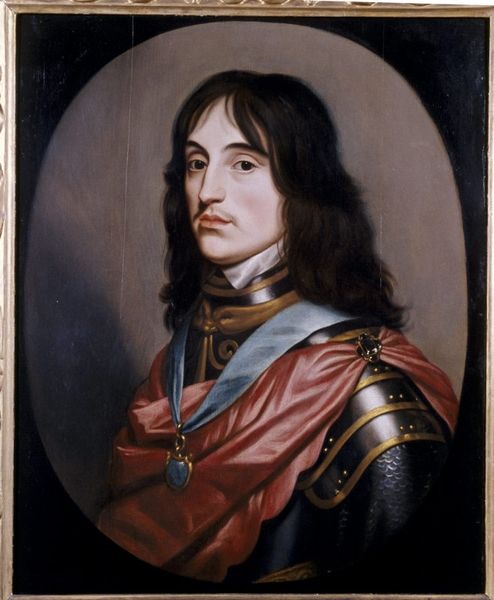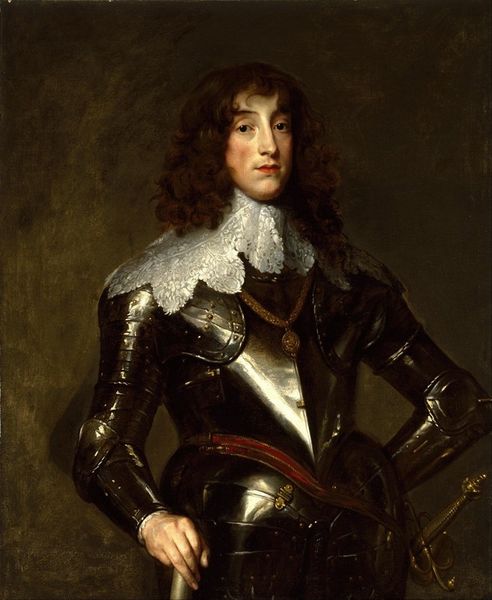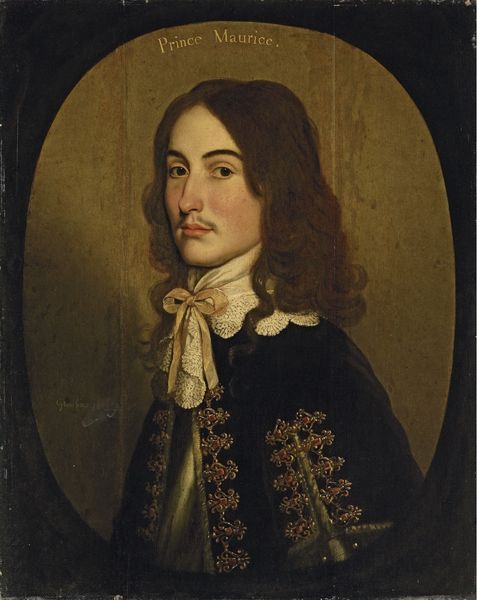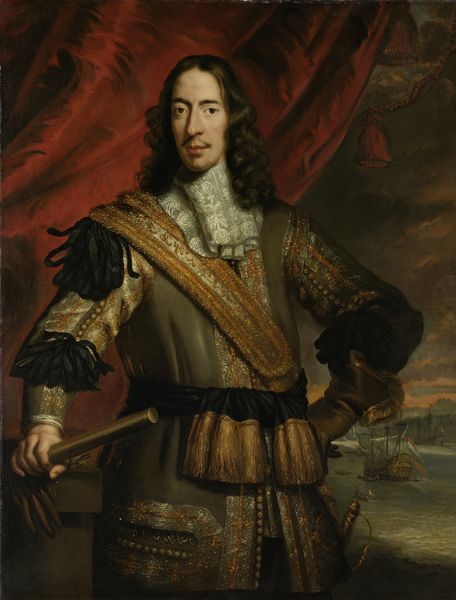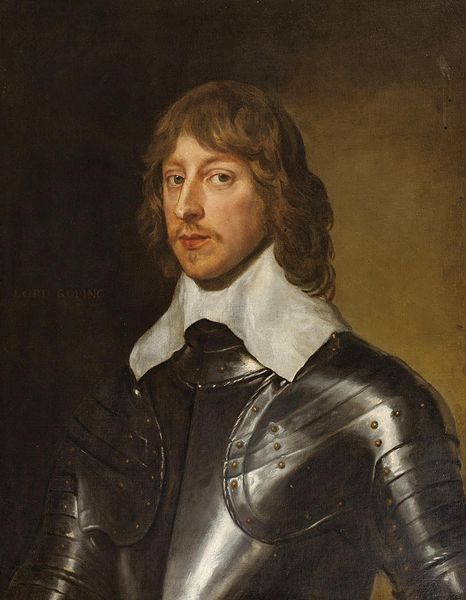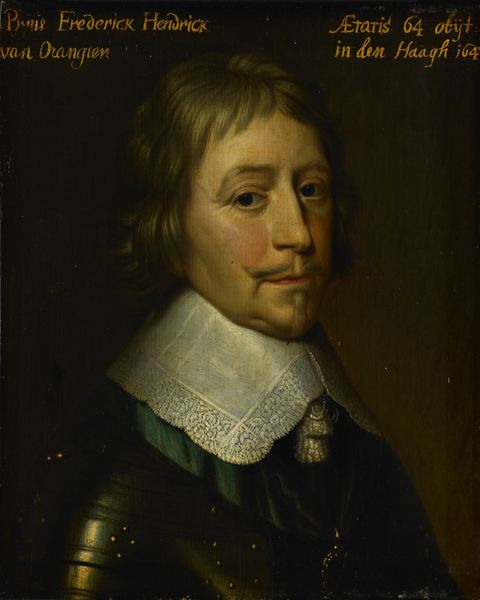
A Portrait Of A Gentleman, half-Length, Believed To Be Sir Thomas Ogle, Wearing A Suit Of Armour, With A White Collar And An Orange Sash 1644
0:00
0:00
painting, oil-paint
#
portrait
#
figurative
#
baroque
#
painting
#
oil-paint
#
history-painting
Copyright: Public Domain: Artvee
Editor: Here we have Gerard van Honthorst's oil painting, "A Portrait Of A Gentleman, Half-Length, Believed To Be Sir Thomas Ogle, Wearing A Suit Of Armour, With A White Collar And An Orange Sash," created around 1644. There's a striking formality to the subject, almost confrontational, but his gaze is also somewhat melancholic. What stories do you think are embedded in this portrait? Curator: This painting is a window into a very specific moment in history, particularly regarding ideas of masculinity and power. The armor is an obvious symbol of authority, but consider its highly polished state—it's almost performative. He's posing in a way that suggests both strength and vulnerability. How does his gaze, as you mentioned, play into this duality, especially juxtaposed with that bright orange sash? Editor: Well, the orange sash pops, right? It draws the eye, but feels... I don't know, almost too flamboyant against the stoicism implied by the armour. Is there something in the choice of colour? Curator: Absolutely. Orange was a color strongly associated with the House of Orange-Nassau, powerful aristocratic families, with strong ties to military. Think about what it meant to wear that colour during a period of political upheaval and religious conflict. He is subtly broadcasting an allegiance, almost a form of coded messaging. And this can be read as an expression of gendered identities during a time of political tension. Editor: That's fascinating. So it's not just a portrait of an individual, but a statement embedded in a complex web of historical and political allegiances? Curator: Precisely. And that statement reflects back onto ideas about gender and identity within this complex period of social change. It reveals not just who he was, but also who he wanted to be perceived as. What have you taken away from this exploration? Editor: It’s changed how I see portraits from that time. There is more than what’s just at first glance. It’s a potent image loaded with societal context. Curator: Indeed.
Comments
No comments
Be the first to comment and join the conversation on the ultimate creative platform.
